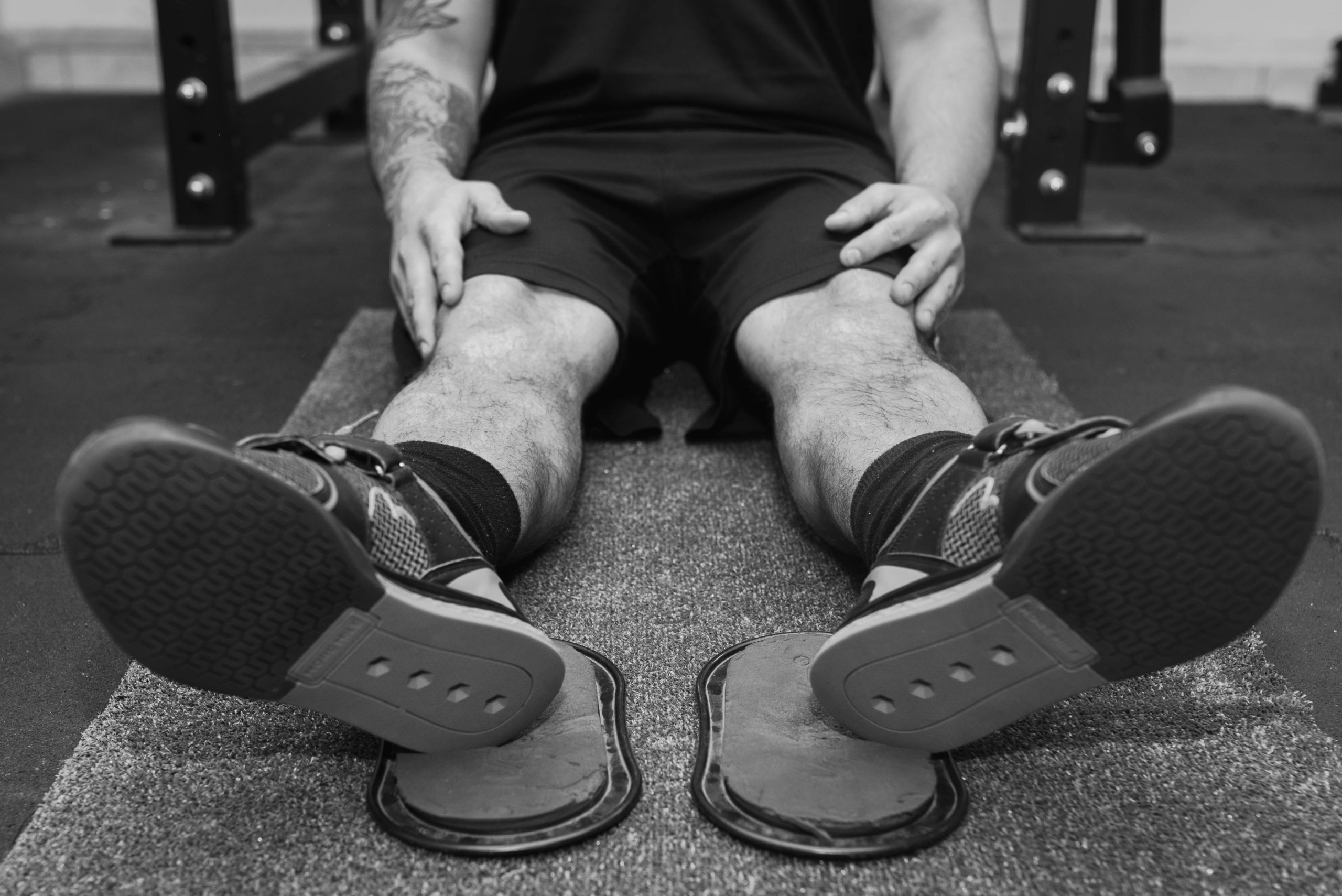
Co robi zawodnik, kiedy doznaje urazu w trakcie zawodów sportowych? Co robi kulturysta kiedy ma zakwasy? Co robi człowiek, który stłucze sobie stopę o kant mebla? Co robi większość sportowców po wysiłku fizycznym?
Wszyscy robimy to samo i wszyscy doradzają nam to samo, czyli obłożyć miejsce urazu lodem, a następnie zażyć tabletki przeciwzapalne. To jest bardzo ZŁA RADA!!
Wielu ludzi zna skrót RICE, który oznacza Rest, Ice, Compression, Elevation czyli: Odpoczynek, Lód, Kompresja, Elewacja. Od wielu, wielu lat sposób ten był i nadal jest zalecany przez lekarzy, fizjoterapeutów, trenerów, aptekarki czy znajomych. Okazuje się, że ten protokół nie tylko nie pomaga, ale SZKODZI i zapobiega normalnemu procesowi odnowy i regeneracji tkanek. Lekarz Gabe Mirkin, który stworzył protokół RICE 36 lat temu w swoim najnowszym artykule na stronie internetowej przyznał, że lód oraz odpoczynek opóźniają reakcję gojenia się i nie są zalecane.
Po jakimkolwiek urazie tkanek miękkich (skręcenie, wybicie, zwichnięcie, uderzenie, ból mięśni itd) zapoczątkowuje się proces samozdrowienia i rozpoczynają się trzy fazy gojenia.
Te fazy to:
1. Faza zapalna
2. Faza namnażania
3. Faza przebudowy
W trakcie tego procesu dochodzi do regeneracji i odbudowy naszych tkanek. Oznacza to, że stan zapalny (faza pierwsza) jest naturalnym i niezbędnym procesem gojenia się tkanek. Dlaczego więc okładamy nasze ciała lodem oraz zażywamy tabletki przeciwzapalne? Tego tak naprawdę nie wie nikt. Spekulacje są takie, że 60-70 lat temu lekarze, trenerzy, terapeuci czy zwykli ludzi nie mieli nic innego w zasięgu ręki więc sięgali po lód i tak robimy po dzień dzisiejszy.
Co się dzieje, kiedy obłożymy miejsce urazu lodem? Chcąc nie doprowadzić do stanu zapalnego zatrzymujemy przepływ krwi, co prowadzi do zatrzymania pierwszego kroku w naturalnym procesie gojenia się tkanek. Kto w ogóle wpadł na pomysł, że to jest dobre?
CZY NAPRAWDĘ MYŚLICIE, ŻE NATURALNA REAKCJA ZAPALNA NASZEGO ORGANIZMU TO JAKAŚ POMYŁKA?
Nasze ciało nie uzdrowi się bez stanu zapalnego. Jest on bardzo potrzebny do całego procesu odnowy naszych tkanek. Układ limfatyczny to “otwarty układ naczyń i przewodów, którymi płynie jeden z płynów ustrojowych – limfa, która bierze swój początek ze śródmiąższowego przesączu znajdującego się w tkankach”. Układ limfatyczny odpowiedzialny jest za transport płynów wraz z układem krwionośnym. Opuchlizna, obrzęk czy krwiak muszą przejść przez układ limfatyczny żeby zostać wyeliminowanym z miejsca urazu. Lód uniemożliwia połączenia pomiędzy naszymi mięśniami oraz nerwami, wyłącza wszelkie sygnały dostarczania do miejsca urazu niezbędnych składników odżywczych oraz co za tym idzie ,,odcina” układ limfatyczny i krwionośny od prawidłowej regeneracji miejsca urazu. Dodatkowo żadne badanie nie wykazało, aby lód tak naprawdę zmniejszał opuchliznę. Kładąc lód zatrzymujemy proces, który i tak zostanie zapoczątkowany, kiedy ten lód zdejmiemy.
Tabletki przeciwzapalne są jeszcze tragiczniejsze w skutkach dla naszego organizmu niż lód. Tabletki te zatrzymują wszelki sygnały reakcji zapalnej w naszym organizmie, a więc nasz organizm myśli, że nic nam się nie stało. W jaki więc sposób nasze ciało ma się więc zregenerować?
Dodatkowo, tabletki przeciwzapalne prowadzą do niestabilności stawów właśnie dlatego, że nie nigdy nie zostaje zapoczątkowana pierwsza i najważniejsza reakcja naszego organizmu, czyli reakcja zapalna. Przez to nasza regeneracja tkanek nigdy nie bedzie kompletna. Dla sportowców nieprawidłowa odnowa tkanek może być początkiem końca kariery. Najnowsze badania przy których pobrane zostały próbki krwi wykazały, że lód prowadzi do jeszcze większych uszkodzeń mięśni przez zwiększenie kinazy fosfokreatynowej, która jest znacznikiem uszkodzenia mięśni.
Co w takim razie robić kiedy doznajemy kontuzji, urazu lub kiedy bolą nas mięśnie po wysiłku?
1. Terapia manualna (wszelki ruch wokół miejsca urazu) lub terapia elektryczna (elektroterapia) . Ruch pozwala na lepszy przepływ krwi, szybsze dostarczanie niezbędnych składników odżywczych oraz sprawniejsze gojenie się miejsca urazu. Jeżeli terapia manualna jest zbyt bolesna, wtedy używamy elektroterapię.
2. Masaż tkanek głębokich i uwalnianie mięśniowo-powięziowe – stosowane w przypadku zakwasów czy ogólnym zmęczeniu po wysiłku fizycznym.
3. Kurkuma – najzdrowsza przyprawa świata naturalnie przyśpiesza gojenie nie blokując reakcji zapalnej.
4. Dodatkowo zalecane jest spożywanie kwasów tłuszczowych omega-3, picie zielonej herbaty, używanie przypraw takich jak: imbir, pieprz cayenne, cynamon, rozmaryn itd., suplementacja BCAA (aminokwasy rozgałęzione) oraz picie dużej ilości wody.
5. Kąpiel w chłodnej wodzie (krioterapia). Najważniejsze, żeby temperatura wody nie była niższa niż 10 i nie większa niż 20 stopni Celcjusza, a czas trwania zabiegu to około 15-20 minut.
6. Sauna lub ciepłe okłady z przerwami na chłodny prysznic. Na przykład 3 razy po 10 minut.
7. Paracetamol – środek przeciwbólowy, który nie blokuje reakcji zapalnej organizmu
Dziekuję,
Mirek Babiarz, MS, CSCS, USAW, PES – SCEC.
BIBLIOGRAFIA:
1. Mirkin G. Why Ice Delays Recovery. March 16, 2014. http://drmirkin.com/
2. Malone T, Engelhardt D, Kirkpatrick J, Bassett F. Nerve injury in athletes caused by cryotherapy. J Athl Train. 1992; 27(3): 235–237.
3. Tseng CY, Lee JP, Tsai YS, Lee SD, Kao CL, Liu TC, Lai C, Harris MB, Kuo CH. Topical cooling (icing) delays recovery from eccentric exercise-induced muscle damage. J Strength Cond Res. 2013;27(5):1354-61. doi: 10.1519/
4. Tidball JG, Wehling-Henricks M. Macrophages promote muscle membrane repair and muscle fibre growth and regeneration during modified muscle loading in mice in vivo. J Physiol. 2007; 578: 327-336.
5. Tidball JG. Inflammatory processes in muscle injury and repair. Am J Physiol Regul Integr Comp Physiol. 2005;288:345-353.
6. Nemet D, Meckel Y, Bar-Sela S, Zaldivar F, Cooper D, Eliakim A. Effect of local cold-pack application on systemic anabolic and inflammatory response to sprint-interval training: a prospective comparative trial. European Journal of Applied Physiology. November 2009, Volume 107, Issue 4, pp 411-417.
7. Ho SS, Illgen R, Meyer R, et al. Comparison of Various Icing Times in Decreasing Bone Metabolism and Blood Flow in the Knee. Am J Sports Med. 1995; 23(1): 74-76. doi: 10.1177/
8. Drez D, Faust DC, Evans JP. Cryotherapy and nerve palsy. American Journal of Sports Medicine. 1981; 9:256-257.
9. Gerstenfeld L, Thiede M, Seibert K, Mielke C, Phippard D, Svagr B, Cullinnane D, Einhorn T. Differential inhibition of fracture healing by non-selective and cyclooxygenase-2 selective non-steroidal anti-inflammatory drugs. Journal of Orthopaedic Research.2003;21(4):670-67
10. Guyton, A. et al. Textbook of Medical Physiology. Philadelphia, PA: W. B. Saunders, 1996, p. 620.
11. Akeson, W. et al. The Chemical Basis of Tissue Repair. Chapter 6 in Rehabilitation of the Injured Knee. Hunter, L., editor, 1984, St. Louis, MO: Mosby, pp 93-148.
12. Ford, H. Physiology of Soft Tissue Healing. Chapter 4 in Rehabilitation of the Knee: A Problem Solving Approach by Bruce H. Greenfield, 1993, Philadelphia, PA, F.A: Davis Company, pp. 85-109.
13. Van den Bekerom M, Struijs P, Blankevoort L, Welling L, Van Dijk C, Kerkhoffs G. What is the evidence for rest, ice, compression, and elevation therapy in the treatment of ankle sprains in adults. J Athl Train. 2012; 47(4): 435–443.
__________________________________
What does a player do when he becomes injured? What does a bodybuilder do when he is sore? What does a regular person do when they hit their foot on a piece of furniture? What do most people do after strenuous activity? We all do the same thing, which is: we ice the affected area and often take anti-inflammatory drugs.
That is a not a good idea at all !!!
We all know RICE, which stands for: Rest, Ice, Compression, and Elevation. For many years this protocol was and still is the standard for treating injuries, pain, contusions etc. Not only this protocol is not helpful but also, it could possibly hinder your recovery and delay a normal process of healing. Doctor Gabe Mirkin, who came up with RICE protocol 36 years ago, stated in his latest article that ice and rest could be detrimental to proper recovery by delaying natural healing process.
After an injury, contusion, muscle damage etc. there are 3 stages of healing that need to take place.
Those are:
1. Inflammation
2. Repair
3. Remodeling
Without all three of those stages, full recovery is not possible. That means that inflammation is a necessary and a natural process of healing. Why do we ice and take anti-inflammatory drugs then? Nobody really knows for sure. It is speculated that 60-70 years ago ice was the most common tool for treating injuries and pain because it was cheap and easily accessible. Unfortunately, it never changed!
What happens when we ice?
Not wanting the inflammation to happen we stop blood circulation to the area, which prevents the first and most important step in healing from happening! Who ever thought that this is a good idea?
DO YOU REALLY THINK THAT THE NATURAL INFLAMMATORY RESPONSE OF OUR BODY IS A MISTAKE? A mistake in 1.5 million years of human evolution that we need to somehow eliminate or change? Our body will not heal without inflammation. There can be inflammation without healing but THERE CANNOT BE HEALING WITHOUT INFLAMMATION.
Our lymphatic system is a part of the circulatory system, comprising a network of lymphatic vessels that carry a clear fluid called lymph directionally towards the heart as it works along side our cardiovascular system. Inflammation needs to drain through lymphatic system to be eliminated. By icing the area we shut off the link between muscles and nerves, we eliminate all signals that direct nutrients towards to area, which in contrast stop the lymphatic and cardiovascular systems from doing their jobs. Additionally, there are no studies that show that ice actually reduces swelling. By icing we simply delay the process that will be initiated anyway when we take the ice off. With any injury, contusion or soreness the time is of the essence so delaying recovery is not a great idea.
ANTI-INFLAMMATORY DRUGS ARE EVEN WORSE THAN ICE. They stop all signals of inflammatory process by telling our body that nothing happened to us, which means that the inflammation process is never initiated. How do we suppose to heal if the healing process is not initiated? Additionally anti-inflammatory drugs are proven to cause joint instability for the exact reason of eliminating the inflammatory reaction, which again is the first, natural and most important step in the healing process. Because of that, our recovery will never be complete and for the athlete that could mean a beginning of the end of his or her career.
Furthermore, the latest studies that took blood samples proved that ice actually causes more muscle damage to the area by increasing creating phosphokinase, which is a marker of muscular damage.
WHAT SHOULD WE DO INSTEAD?
1. Manual therapy or electrotherapy (Lymphatics drain through muscular contraction and movement). Movement increases circulation, which delivers necessary nutrients to the area and speed up the healing process. If manual therapy is too painful we then recommend using electrotherapy.
2. Massage, myofascial release, active release technique – those would be used with athletes that are sore and tired from activity.
3. Using curcumin – healthiest spice in the world. It speeds up cell repair but it does not prevent the natural inflammatory response. Also available in topical form.
4. Taking Omega 3 fish oil, drinking green tea, using ginger, cayenne pepper, cinnamon etc., supplementing with BCAA’s and drinking water regularly is also beneficial in the healing and inflammatory process.
5. Cold-water baths with water temperature between 50-65 degrees (10-20 Celsius) for 15-20 minutes. Could also alternate between warm and cold-water baths.
6. Sauna or hot packs to the area. With sauna, a proven protocol is 3×10 minutes alternating between sauna and cold showers.
7. Analgesics (paracetamol for example) – those are used strictly for pain and they do not stop the inflammatory response.
Above information is not made up by me but it is proven in many studies and adopted by many health professionals with more coming on board each day.
Thank You.
Mirek Babiarz, MS, CSCS, PES, USAW, CSAC
REFERENCES
1. Mirkin G. Why Ice Delays Recovery. March 16, 2014.http://drmirkin.com/
2. Malone T, Engelhardt D, Kirkpatrick J, Bassett F. Nerve injury in athletes caused by cryotherapy. J Athl Train. 1992; 27(3): 235–237.
3. Tseng CY, Lee JP, Tsai YS, Lee SD, Kao CL, Liu TC, Lai C, Harris MB, Kuo CH. Topical cooling (icing) delays recovery from eccentric exercise-induced muscle damage. J Strength Cond Res. 2013;27(5):1354-61. doi: 10.1519/
4. Tidball JG, Wehling-Henricks M. Macrophages promote muscle membrane repair and muscle fibre growth and regeneration during modified muscle loading in mice in vivo. J Physiol. 2007; 578: 327-336.
5. Tidball JG. Inflammatory processes in muscle injury and repair. Am J Physiol Regul Integr Comp Physiol. 2005;288:345-353.
6. Nemet D, Meckel Y, Bar-Sela S, Zaldivar F, Cooper D, Eliakim A. Effect of local cold-pack application on systemic anabolic and inflammatory response to sprint-interval training: a prospective comparative trial. European Journal of Applied Physiology. November 2009, Volume 107, Issue 4, pp 411-417.
7. Ho SS, Illgen R, Meyer R, et al. Comparison of Various Icing Times in Decreasing Bone Metabolism and Blood Flow in the Knee. Am J Sports Med. 1995; 23(1): 74-76. doi: 10.1177/
8. Drez D, Faust DC, Evans JP. Cryotherapy and nerve palsy. American Journal of Sports Medicine. 1981; 9:256-257.
9. Gerstenfeld L, Thiede M, Seibert K, Mielke C, Phippard D, Svagr B, Cullinnane D, Einhorn T. Differential inhibition of fracture healing by non-selective and cyclooxygenase-2 selective non-steroidal anti-inflammatory drugs. Journal of Orthopaedic Research.2003;21(4):670-67
10. Guyton, A. et al. Textbook of Medical Physiology. Philadelphia, PA: W. B. Saunders, 1996, p. 620.
11. Akeson, W. et al. The Chemical Basis of Tissue Repair. Chapter 6 in Rehabilitation of the Injured Knee. Hunter, L., editor, 1984, St. Louis, MO: Mosby, pp 93-148.
12. Ford, H. Physiology of Soft Tissue Healing. Chapter 4 in Rehabilitation of the Knee: A Problem Solving Approach by Bruce H. Greenfield, 1993, Philadelphia, PA, F.A: Davis Company, pp. 85-109.
13. Van den Bekerom M, Struijs P, Blankevoort L, Welling L, Van Dijk C, Kerkhoffs G. What is the evidence for rest, ice, compression, and elevation therapy in the treatment of ankle sprains in adults. J Athl Train. 2012; 47(4): 435–443.



